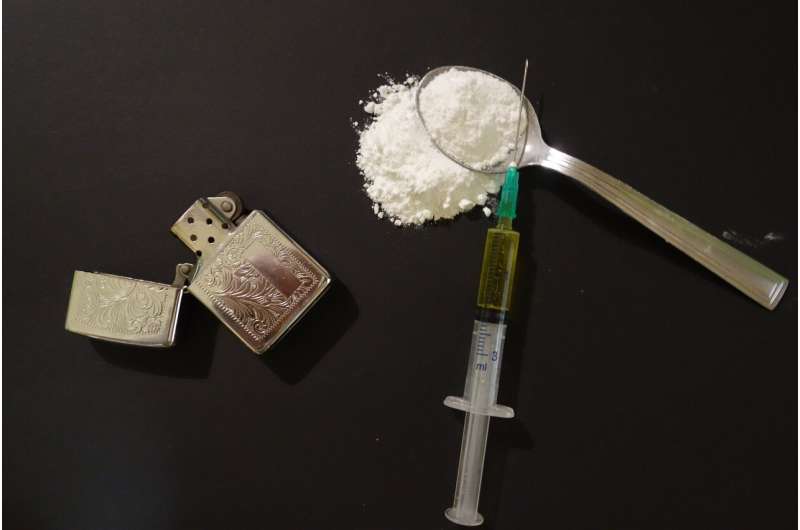Tensions in drug policy landscape and overdose prevention strategies

Data published today to the Prescription Drug Policy System at PDAPS.org highlight the complex and often contradictory drug policy landscape in the United States.
While almost every U.S. state has "Good Samaritan" overdose laws that provide legal protections for bystanders of an overdose to encourage them to call for emergency support and avoid accidental death, the laws themselves vary greatly in the level of protection they provide to witnesses.
Further, nearly two-thirds of those states have laws that establish and reinforce involuntary commitment and treatment, a system with little evidence to support its value at preventing relapse and future overdose.
The newly updated data, produced by the Temple University Center for Public Health Law Research with support from Vital Strategies, capture the vital nuances of these laws using a scientific legal mapping process called policy surveillance.
"With the United States mounting its highest number of opioid overdose deaths in 2020, these new data give us the starting point to evaluate the real impact of the drug policy landscape as a whole and build an evidence base for what's working, and what is not," said Elizabeth Platt, JD, director of the Center's Policy Research Technology Program and lead researcher on this project.
The comprehensive new data track two major strategies for how states are dealing with overdose and substance use disorder.
"This cutting-edge research helps inform Vital Strategies' partnership with states to combat an intensifying overdose crisis," said Kate Boulton, MPH, JD, Senior Legal Technical Advisor at Vital Strategies. "It is critical that states embrace the strategies that we know are needed—Good Samaritan Laws that are robustly protective in their scope and application and promotion of voluntary treatment options, not forced commitment for those affected by substance use disorder."
States have spent the past three years doubling down on involuntary commitment laws, according to the data. There are now 15 jurisdictions that authorize a 90-day maximum duration of an initial involuntary commitment, an increase from 12 jurisdictions in 2019. Colorado changed its law in July 2020 to increase the duration of commitment from 30 days to 90 days.
Many states still allow patients to undergo treatments without consent during involuntary commitment, including 12 states where a patient may receive medications, four states where they may undergo surgery, and one state (Louisiana) where they may undergo electric shock.
Meanwhile, Minnesota changed its law to provide a right to counsel at a commitment hearing for patients. Now all 35 states with involuntary commitment laws extend that protection.
There are also now Good Samaritan drug overdose laws in all but three states—Kansas, Texas and Wyoming. Since 2017 there has been an increase in states that continue to expand their protections for overdose bystanders:
- There was a small increase in the number of states (an increase from 16 to 19) offering protection from arrest, charge, and prosecution from controlled substance possession offenses. Most jurisdictions (46) offer protection from prosecution for controlled substance possession; only 28 offer protection from arrest.
- Twenty-six states now provide protection from probation or parole violations, an increase from 19 jurisdictions in 2017. Twenty-three states consider reporting an overdose to be a mitigating factor in sentencing, this has stayed the same since 2017.
- There was a small increase in states offering protection from arrest, charge, and prosecution from drug paraphernalia offenses—up to 17 jurisdictions from 12 in 2017.
The datasets now capture Good Samaritan laws from January 1, 2007 to June 1, 2021, and laws regulating involuntary commitment for substance use from March 1, 2018 to May 1, 2021, in all 50 states and the District of Columbia. The data were created with funding from Vital Strategies to the Center for Public Health Law Research with the Health in Justice Action Lab at Northeastern University School of Law, who initially created the dataset capturing involuntary commitment laws for substance use.
This is the first of many forthcoming updates to PDAPS.org. In the coming months, the site will add data related to access to Naloxone, drug use and access during the COVID-19 pandemic, opioid prescribing limits, syringe service programs, and laws and policies affecting treatment options like buprenorphine and institutions for mental diseases.
The Center for Public Health Law Research at the Temple University Beasley School of Law supports the widespread adoption of scientific tools and methods for mapping and evaluating the impact of law on health. Learn more at phlr.org.
Vital Strategies is a global health organization that believes every person should be protected by a strong public health system. Since 2018, Vital Strategies has been a founding partner in Bloomberg Philanthropies $50 million investment to address the country's overdose crisis. Learn more at: www.vitalstrategies.org/
More information: Center for Public Health Law Research. Good Samaritan Overdose Laws. September 9, 2021. phlr.org/product/good-samarita … dose-prevention-laws
Center for Public Health Law Research. Involuntary Commitment For Substance Use. September 9, 2021. phlr.org/product/involuntary-c … itment-substance-use



















